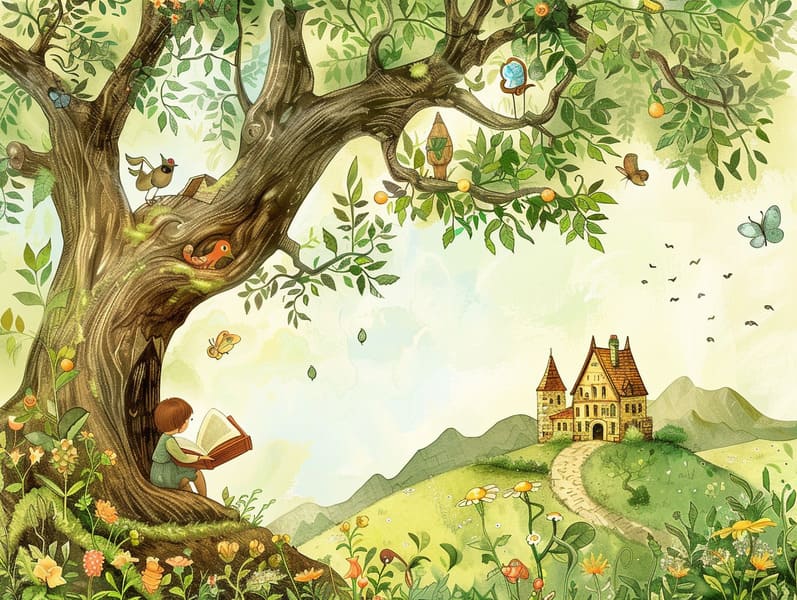The Beginning of Classic Fairy Tales with Their Lasting Majesty.
The Beginning of Classic Fairy Tales with Their Lasting Majesty.
Blog Article

Fairy tales for kids have legendary status. These stories have been passed down from one generation to the next centuries before they were ever written down. They emerged from a variety of traditions, including American traditions. They were initially told among grown-ups, often carrying themes and messages concerning the societal norms and beliefs of the time.
The Grimm brothers, Jacob and Wilhelm (the Grimm brothers), were among the first to assemble many of these beloved fairy tales. Their anthology, "Grimm's Folk Tales," included tales like "Cinder Maid," "Hansel and Grethel," and "Snow-White and Rose-Red," which have since become pillars in the world of iconic fairy tales. Similarly, Hans Christian Andersen's magical fairy tales, such as "The Mermaid," and "The Ugly Duckling," have gained the love worldwide, guaranteeing their place in the pantheon of iconic fairy tales.
Despite their age, classic fairy tales remain as meaningful as ever, especially as children's night stories. These charming stories are now available in many formats, including vibrantly illustrated books, whimsical animations, and web-based fairy tales.
Their persistent charm can be traced to several charming aspects:
Significant Morals: Ancient fairy tales often whisper important moral lessons. Fairy tales like "The Shepherd Boy and the Wolf" teach the virtue of being truthful, while "The Tale of the Tortoise and the Hare" stress the traits of perseverance and meekness. These tales offer kids clear distinctions between good and bad, molding their moral compass in a tender yet important way.
Empathy and Understanding: Traditional fairy tales frequently depict heroes facing problems and hurdles, fostering young readers to relate with their struggles and champion their triumphs. For instance, "Beauty and Her Beast" teaches us the significance of seeing inner beauty to acknowledge the true being of a character, developing insight and awareness.
Cultural Understanding: Many fairy tales are deeply ingrained in the cultural contexts from which they were born. Discovering these tales can provide captivating looks into different beliefs, building a sense of cultural appreciation and acknowledgment.
Imagination and Creativity: The fanciful elements in traditional fairy tales—wizardry and magic—inspire children’s visions. These narratives guide readers to imaginary realms, motivating imaginative ideas and a sense of curiosity that lasts a lifetime.
Ancient fairy tales are not only enchanting but also enlightening. They work as captivating tools in building various intellectual and emotional capacities in young ones. When classic fairy tales are told out loud, they improve verbal development by bringing new language and detailed sentence structures. This practice also fosters hearing abilities and attention, as kids remain attentive, expectant to see what happens next.
Furthermore, talking about the themes and characters of fairy tales can cultivate intellectual skills and problem-solving abilities. Young ones are instructed to discover patterns, anticipate outcomes, and know cause and effect. These talks also further little ones utter their thoughts and feelings, advancing their emotional intelligence.
In today’s high-tech era, the accessibility of digital fairy tales has made these narratives more available than ever. fairy tales for kids Web platforms and apps supply extensive collections of traditional fairy tales that can be accessed or heard anytime, anywhere. Fairy tales narrated are particularly sought after, extending an charming way for children to engage with these alluring stories. Narrated books and read-to-me stories bring characters and settings to life, often supported by fantastical musical scores and melodies that elevate the tale experience.
The lasting appeal of old fairy tales lies in their ability to evolve to present days while preserving their core values. Contemporary revisions of these tales often showcase more varied figures and modern settings, making them understandable to today’s audience. However, the fundamental themes of fortitude, warmth, and truth remain unchanged, continuing to influence children of all ages.
Classic fairy tales also offer a sense of comfort and familiarity. They present a orderly narrative with a transparent beginning, middle, and end, often coming to a close with the settlement of conflicts and the triumph of justice over injustice. This predictability can be soothing for young ones, yielding a sense of reliability in an dynamic world.
Timeless fairy tales continue to enchant and educate new generations, maintaining their magic and importance in modern society. As children's bedtime stories, they feature a perfect blend of charm and enlightenment, nurturing moral values, empathy, and creativity. The proliferation of web-based fairy tales and the favor of fairy tales narrated certify that these old tales remain reachable to new generations.
By retaining and divulging these fairy tales, we continue to exalt the rich tapestry of creativity and cultural heritage. Whether you are experiencing a colorful picture book, experiencing a cyber library, or playing an voice book, the captivation of ancient fairy tales is always within reach. These narratives demonstrate of the persistent impact of stories and its ability to bond us across time and space.
No matter if you are experiencing a beautifully illustrated book, viewing a cyber library, or playing an sound book, the fascination of children's fairy tales is always within reach.
These narratives illustrate of the invariable essence of tales and its ability to tie us across time and space, forging a link that captivates and teaches alike.